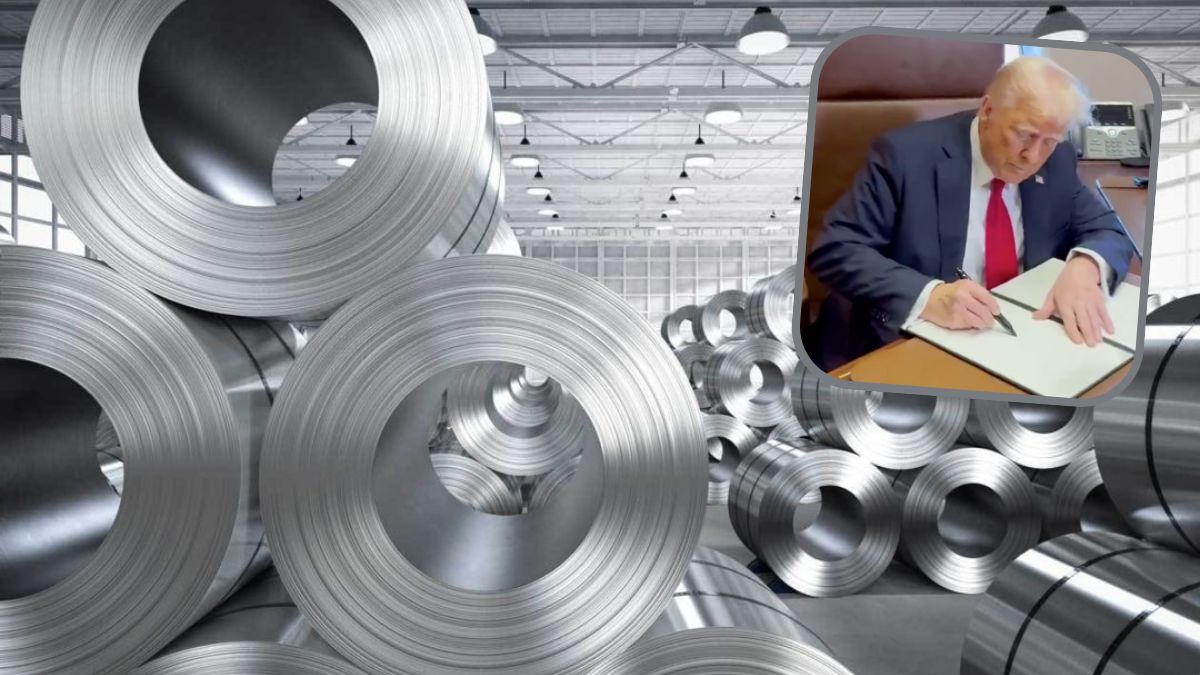
U.S. President Donald Trump announced on Sunday that he will impose tariffs on steel and aluminum imports from abroad starting Monday, February 10. He also hinted that he would announce additional tariffs later in the week.
These 25 percent tariffs will be added to those Trump plans to implement on all imports from Mexico, Canada, and China, which have been paused for 30 days due to ongoing talks with the presidents of these countries.
How will Trump’s tariffs on steel and aluminum affect the economy?
Experts have warned that the imposition of tariffs on steel and aluminum will have several repercussions on the economy and diplomatic relations. Among these are:
- Consequences for the global economy: The tariffs could result in increased steel and aluminum prices in the U.S., negatively affecting industrial sectors that rely on these materials.
- Trade war with the European Union: The European Union has stated that it will not remain passive and will retaliate against these tariffs, imposing levies on essential U.S. products such as vehicles and agricultural goods.
- Impact on trade relations: These actions could create tensions between the U.S. and its trade allies.
ALSO READ Donald Trump declares February 9 as “Gulf of America Day”
Which countries will the steel and aluminum tariffs apply to?
The 25 percent tariffs on steel and aluminum could particularly affect countries like China, Mexico, Canada, and European Union (EU) members, as they are the main exporters of these metals to the United States.
During his first term, Trump established a 25% tariff on steel and a 10% tariff on aluminum. However, he later granted tax exemptions to various trade allies, such as Canada, Mexico, the European Union, and the United Kingdom.
Why does Donald Trump want to impose tariffs?
This action is part of Trump’s ongoing warnings directed at the U.S.’s main trade allies, accusing them of benefiting unfairly from the country’s economic wealth.
What other tariffs will Trump impose?
President Donald Trump mentioned that he will announce reciprocal tariffs on Tuesday or Wednesday. This measure aims to align the customs duties on goods entering the United States with the tariffs that U.S. products face in other countries.
“Next week, I will announce reciprocal tariffs, so we are treated equally with other countries. We don’t want more or less, so I will announce it next week, along with many other things… If they charge us 130% and we don’t, that won’t continue. This won’t affect all countries, because some impose the same tariffs as we do. But for those who benefit from the U.S., we will return the favor,” he said.
With this, Trump stated that all products from China will face an additional 10% tariff.
Donald Trump has mentioned that he would impose tariffs on various products, such as pharmaceuticals, oil, and semiconductors. Additionally, he stated that he is considering the possibility of imposing import tariffs on the European Union.
Trump suspends tariffs on Mexico and Canada
On Saturday, February 2, the Republican president signed an executive order imposing 25 percent tariffs on all imports from Mexico and Canada. However, the following day, the U.S. president suspended this measure for 30 days in exchange for both countries agreeing to halt fentanyl trafficking and illegal migration.
The agreement was reached after talks with Mexican President Claudia Sheinbaum and Canadian Prime Minister Justin Trudeau. In these discussions, the Mexican president pledged to reinforce the northern border with 10,000 National Guard troops.
Meanwhile, Justin Trudeau stated that Canada would implement a plan involving $1.3 billion to strengthen its border with the United States through new helicopters, technology, and nearly 10,000 frontline officers deployed along the borders of both countries.








